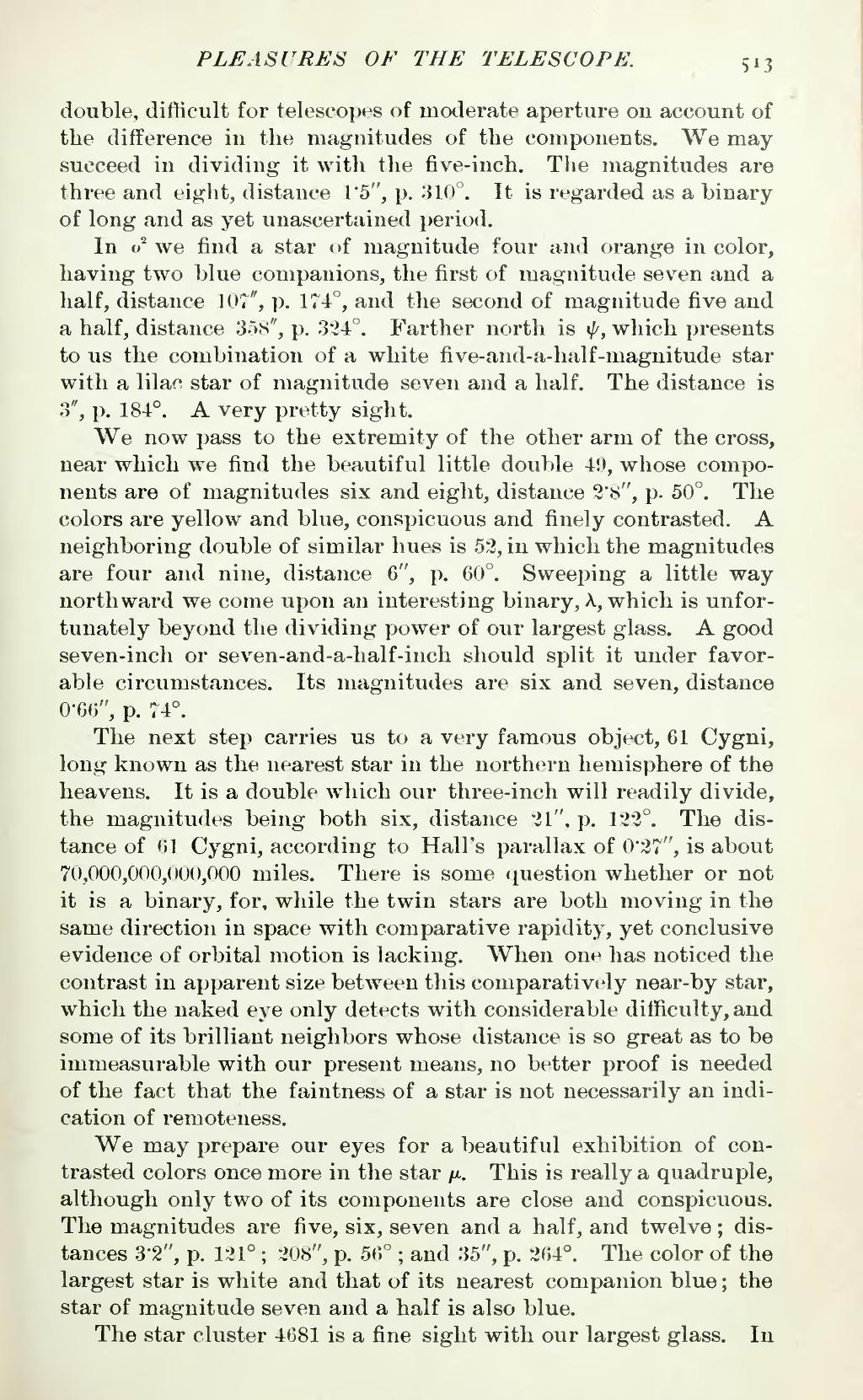double, difficult for telescopes of moderate aperture on account of the difference in the magnitudes of the components. We may succeed in dividing it with the five-inch. The magnitudes are three and eight, distance 1·5″, p. 310°. It is regarded as a binary of long and as yet unascertained period.
In ο2, we find a star of magnitude four and orange in color, having two blue companions, the first of magnitude seven and a half, distance 107″, p. 174°, and the second of magnitude five and a half, distance 358″, p. 324°. Farther north is ψ, which presents to us the combination of a white five-and-a-half-magnitude star with a lilac star of magnitude seven and a half. The distance is 3″, p. 184°. A very pretty sight.
We now pass to the extremity of the other arm of the cross, near which we find the beautiful little double 49, whose components are of magnitudes six and eight, distance 2·8″, p. 50°. The colors are yellow and blue, conspicuous and finely contrasted. A neighboring double of similar hues is 52, in which the magnitudes are four and nine, distance 6″, p. 60°. Sweeping a little way northward we come upon an interesting binary, λ, which is unfortunately beyond the dividing power of our largest glass. A good seven-inch or seven-and-a-half-inch should split it under favorable circumstances. Its magnitudes are six and seven, distance 0·66″, p. 74°.
The next step carries us to a very famous object, 61 Cygni, long known as the nearest star in the northern hemisphere of the heavens. It is a double which our three-inch will readily divide, the magnitudes being both six, distance 21″, p. 122°. The distance of 61 Cygni, according to Hall's parallax of 0·27″, is about 70,000,000,000,000 miles. There is some question whether or not it is a binary, for, while the twin stars are both moving in the same direction in space with comparative rapidity, yet conclusive evidence of orbital motion is lacking. When one has noticed the contrast in apparent size between this comparatively near-by star, which the naked eye only detects with considerable difficulty, and some of its brilliant neighbors whose distance is so great as to be immeasurable with our present means, no better proof is needed of the fact that the faintness of a star is not necessarily an indication of remoteness.
We may prepare our eyes for a beautiful exhibition of contrasted colors once more in the star μ. This is really a quadruple, although only two of its components are close and conspicuous. The magnitudes are five, six, seven and a half, and twelve; distances 3·2″, p. 121°; 208″, p. 56°; and 35″, p. 264°. The color of the largest star is white and that of its nearest companion blue; the star of magnitude seven and a half is also blue.
The star cluster 4681 is a fine sight with our largest glass. In
